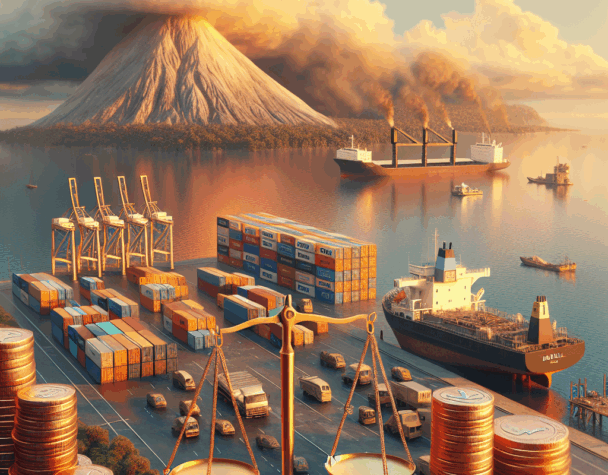
Russia Diesel Ban Sends Freight Costs Higher Now!!
Wed, October 01, 2025Two clear, verifiable supply shocks surfaced in the past week and cut across commodities in different ways: a Russian decision to curb fuel exports and a large disruption at Indonesia’s Grasberg copper complex. Both are concrete events reported by major news providers and have immediate operational consequences for freight, mining, and commodity users.
Russia’s export moves: what changed and who’s affected
At the end of September, Russian authorities extended a gasoline export ban through September 30, 2025, and announced a partial diesel export restriction that will also run until that date. The diesel limitation is targeted at resellers rather than primary producers, while the gasoline ban applies more broadly to exporters. These steps were framed as measures to stabilize domestic fuel availability after refinery outages from attacks.
Key, confirmed facts
- Gasoline export ban extended through Sept 30, 2025.
- Diesel export curbs also set to Sept 30, 2025; curbs focus on resellers.
- Announcements followed refinery disruptions attributed to recent strikes.
Immediate channels of impact
- Diesel is a primary fuel for trucks, rail, farm equipment and some mining fleets — any squeeze on diesel availability or arbitrage flows tends to raise freight and operating costs across bulk commodities and agriculture.
- Refinery and bunkering logistics can see local price dislocations as cargoes are rerouted or buyers compete for available product.
- Short-term spreads (e.g., ULSD/HO futures and physical prompt vs. forward differentials) are the most direct places to track tightening.
Grasberg mudslide: copper supply cut
Separately, a major incident at the Grasberg mine in Indonesia — reported as a mudslide in early September — forced Freeport‑McMoRan to declare force majeure on shipments from the complex. Industry intelligence cited in reporting estimates roughly 591,000 tonnes of copper production could be lost through the end of 2026, materially tightening mined supply and flipping expected balances for 2025 and beyond.
Key, confirmed facts
- Grasberg suffered a significant operational disruption (mudslide) that halted or restricted production.
- Freeport‑McMoRan declared force majeure on affected output.
- Analyst estimates put the lost copper at about 591,000 tonnes through end‑2026 — a nontrivial share of annual mine output — and LME copper rallied to multi‑month highs on the news.
Why these two items matter together
Each event is specific, but they interact through cost and supply channels:
- Higher diesel and freight costs from the Russian export measures increase the delivered cost of bulk commodities — iron ore, coal, grains and fertilizers — and raise operating expenses for miners shipping concentrate or finished metals.
- At the same time, a direct copper production shortfall tightens metal balances, supporting higher copper prices and pressuring downstream users (cables, construction, electrification projects) with rising input bills.
- The combination — more expensive logistics plus less metal supply — amplifies inflationary pressure on inputs that are central to industrial activity and agricultural harvesting/logistics.
Concrete indicators to watch now
- Refined fuel front-month spreads and ULSD (heating oil) prompt premiums in Europe and Asia.
- Freight rate indices (e.g., truck/rail tariffs where tracked, and marine bunker prices) for sudden upward moves.
- LME and exchange-traded copper prices and warehouse outflows; calendar spreads that show prompt tightness.
- Company updates from major miners and refiners for revised production or export permissions.
Short, practical takeaways
These are confirmed supply-side actions, not speculation: Russia’s export limits have an immediate transmission route to freight and operating costs, while Grasberg’s outage removes a sizeable chunk of copper supply. For commodity users and traders that means close monitoring of prompt fuel and freight spreads, copper prompt vs. forward curves, and company-level production notices. Risk managers should prepare for higher near-term input and logistics costs and for elevated price volatility in copper and fuel-linked sectors.
If you want, I can prepare a one‑page watchlist with tickers, specific futures contracts and spread levels to monitor (ULSD/HO prompt spreads, LME 3‑month vs. spot, relevant shipping indices) or map the most exposed miners, refiners and agricultural shippers.
